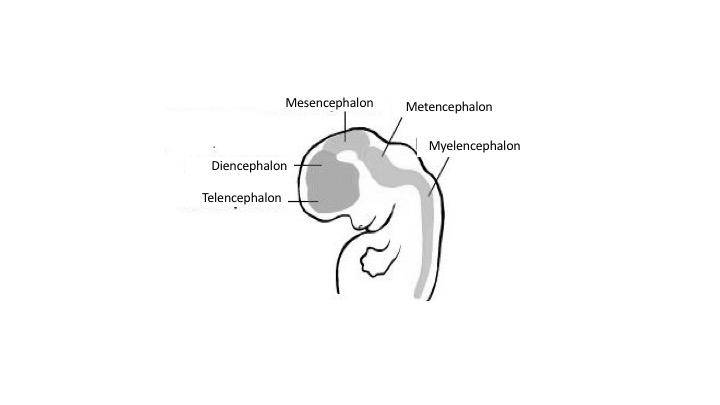Also known as the forebrain, in contrast to the midbrain (mesencephalon) and the hindbrain (rhombocephalon) as indicated in figure below (together with other other primary structures that make up the central nervous system). The prosencephalon ultimately participates in the control of a number of functions (e.g., eating, emotional displays, internal temperature, sleep). It becomes evident during the second month of gestation in rostral end of the recently closed neural tube. By the five-vesicle stage (8 weeks). it divides transversely into the telencephalon and the diencephalon. At around the same time, it divides into the left and right cerebral hemispheres. Failure to divide results in holoprosencephaly.
